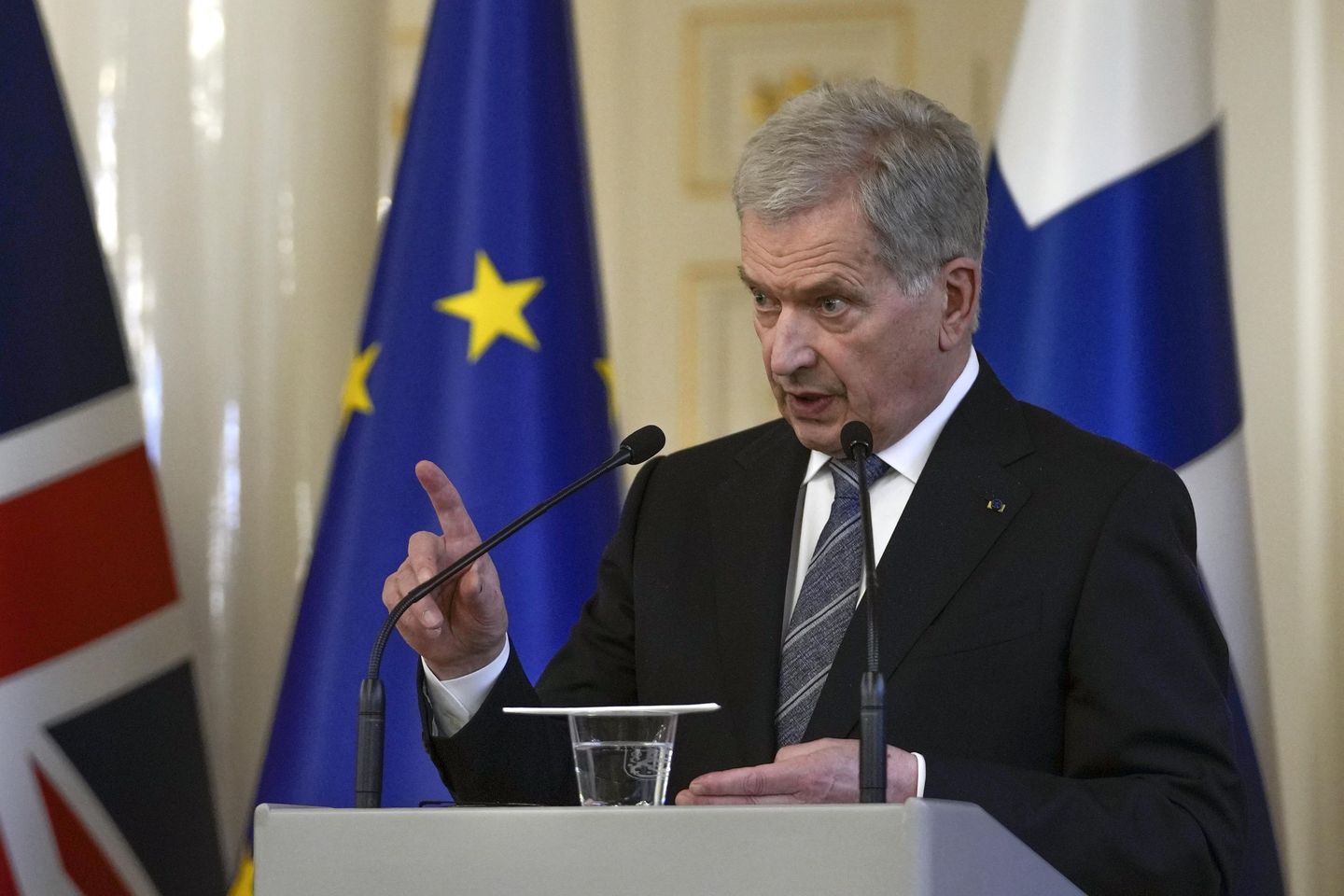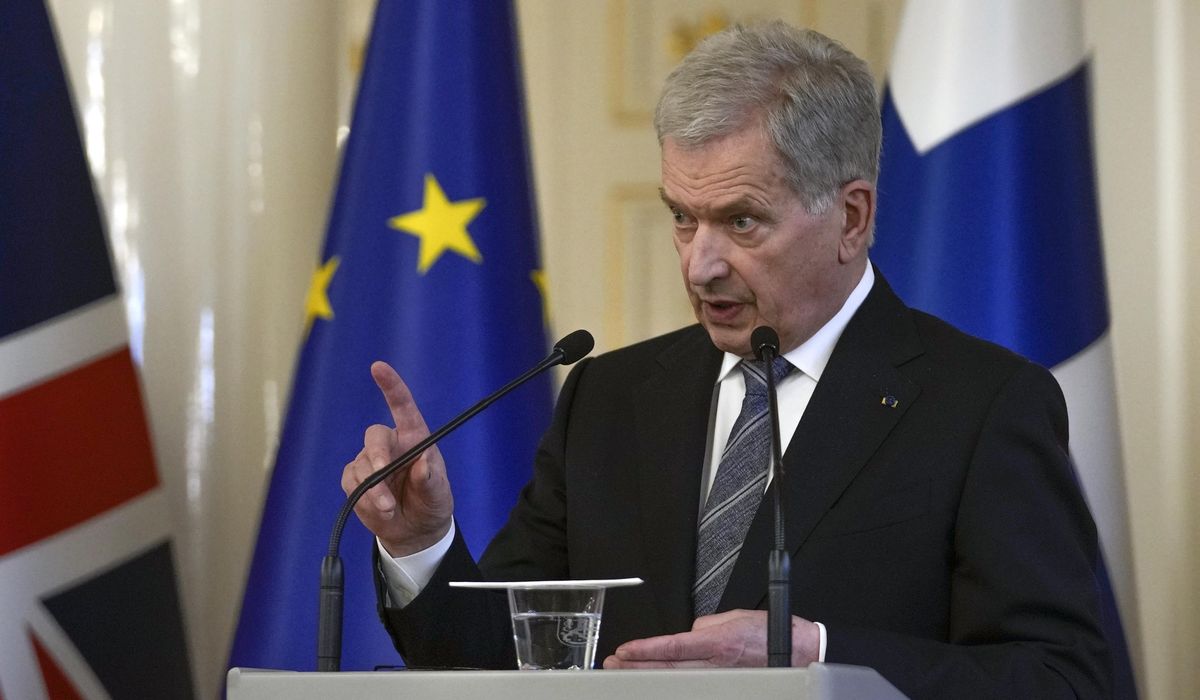

Russia’s invasion of Ukraine was designed to topple the government in Kyiv, fracture NATO, and cement Moscow’s status as both a fearsome 21st-century military machine and an irreplaceable energy kingpin that could use its oil and gas reserves to bully Europe.
Less than three months into the war, none of those goals have been met. Instead, Russian President Vladimir Putin’s Ukraine gambit has backfired spectacularly across the board, culminating in Thursday’s blockbuster announcement that Finland will abandon 75 years of neutrality and formally apply to join NATO.
Finnish leaders did not mince words when explaining exactly why their nation, which shares an 833-mile border with Russia, is aligning itself with Moscow’s No. 1 adversary.
“You caused this. Look in the mirror,” Finnish President Sauli Niinisto said earlier this week in comments directed squarely at the Kremlin.
The decision by Finland, and a similar announcement from Sweden expected as soon as this week, represent the exact opposite outcome Mr. Putin hoped for. By launching a full-scale invasion of Ukraine and threatening the West with nuclear war should they intervene, the Russian leader was banking on cracks emerging within NATO. Members of the alliance, he seems to have believed, would disagree about the extent to which they should aid Ukraine militarily, paralyzing the organization and exposing it as a paper tiger incapable of concrete action when it matters most.
Thursday’s news out of Helsinki has proven Mr. Putin wrong. Not only is NATO set to welcome two new countries, but longstanding pillars of the alliance such as Germany have announced they’ll dramatically ramp up defense spending in response to Russia’s military campaign in Ukraine.
SEE ALSO: $40B Ukraine aid package hits wall in Senate over concerns about transparency
In directly causing such a military spending boost in Berlin, Mr. Putin’s war achieved what U.S. administrations of both parties — including four years of aggressive public cajoling by former President Donald Trump — could not. Indeed, Washington has spent years urging Germany and other NATO members to increase defense spending to better prepare the continent for a potential showdown with Russia. Only when Russian tanks rolled across the Ukrainian border did those European governments finally make firm commitments.
Mr. Putin also likely believed that Europe would sidestep a confrontation with Russia because of its reliance on Moscow’s energy supplies. The Kremlin has a history of using energy as a weapon, and there was reason to believe that Mr. Putin could cut off fuel deliveries to nations that directly aided Ukraine.
Instead, the European Union in March unveiled an ambitious plan to wean itself off of Russian oil and gas. Such a step seemed almost unthinkable just a few months ago, but it’s yet another example of the unintended consequences of the Russian invasion.
“We must become independent from Russian oil, coal and gas. We simply cannot rely on a supplier who explicitly threatens us,” European Commission President Ursula von der Leyen said in March.
But energy independence and NATO expansion do not necessarily mean a more secure Europe, at least not in the short term.
The Russian Foreign Ministry warned Thursday it will take “retaliatory steps” in reaction to the news of NATO growth. Other top Russian officials warned against NATO, and its soon-to-be member states of Sweden and Finland, ramping up its military assistance to Ukraine.
SEE ALSO: Clinton lawyer seeks to silence witness who could dispute the Trump-Russia narrative
Those officials even warned of a potential nuclear exchange.
“There is always a risk of such conflict turning into a full-scale nuclear war, a scenario that will be catastrophic for all,” said Dmitry Medvedev, deputy head of Russia’s Security Council.
Battlefield blunders
The Russian military’s reputation has suffered arguably the most damage as a result of the campaign in Ukraine. Its February lightning offensive to capture Kyiv, the Ukrainian capital, failed within weeks. Russian troops pulled out of northern Ukraine and have since turned their attention to the disputed Donbas region in the east.
Russian forces have made modest gains in the Donbas in recent weeks, capturing small villages and bombarding key cities such as Mariupol, where an estimated 2,000 Ukrainian fighters remain holed up in the city’s sprawling steel plant. Their refusal to surrender has prevented Moscow from taking full control of the city and establishing a land bridge to the Crimean peninsula, which Russia forcibly annexed in 2014 and now use as a key staging ground.
Further to the north, Ukrainian forces this week launched a major counteroffensive that has pushed Russian troops away from the outskirts of Kharkiv, Ukraine’s second-largest city. Ukrainian military officials say the city is now out of range of Russian artillery.
More broadly, the war has served as a public test for a Russian military previously considered one of the world’s most dangerous. Pentagon planning documents for years have classified Moscow as a major player in 21st-century “great power competition,” and the Ukraine conflict was Mr. Putin’s chance to show the world just what his nation is capable of.
But Russian forces have failed in a host of arenas. Perhaps most notably, the Russians still have not secured air supremacy over the skies of Ukraine, something most observers expected they could accomplish within a matter of days.
“We would not assess that the Russians have air superiority over Ukraine and we would still assess that the aerospace is contested. And one of the reasons it’s contested is because Ukrainians still have a viable air force of their own and they also have a very effective air defense capability both short and long range air defense capability,” Pentagon spokesman John Kirby said this week.
“And we know that it’s having an impact on Russia because not only do they not have air superiority, but because of the kinds of flight profiles that they’re flying,” he said. “Most of their sorties never even leave Russian air space.”
The planes that do venture out of Russian airspace seem ill-equipped for the job.
“Almost none of their vehicles contain situational awareness and digital battle management,” British Defense Minister Ben Wallace said in a speech this week. “Vehicles are frequently found with 1980s paper maps of Ukraine in them.”
“GPS receivers have been found taped to the dashboards of downed Russian SU-34s so the pilots knew where they were, due to the poor quality of their own systems,” he said.
Russian tanks haven’t fared much better. Social media has been littered with photos of bombed out Russian vehicles, many of them destroyed by U.S.-made Javelin anti-tank missiles given to the Ukrainian military.
In the early days of the Kyiv campaign, Russian armored columns remained idle for days because they ran out of fuel. Western military observers also have marveled at the Russian military’s inability to properly camouflage its vehicles, making them easy targets for Ukrainian gunners.
All of those failures have added up to a stunning scenario in which a Ukrainian victory, once viewed as a pipe dream, now seems realistic. And the Russian military’s reputation may never fully recover.
“This war is a disaster,” Sen. Lindsey Graham, South Carolina Republican, said during an appearance on “Fox News Sunday” earlier this week. “You see the Russian military getting their ass handed to them on the battlefield in Ukraine.”
– This article is based in part on wire-service reports
